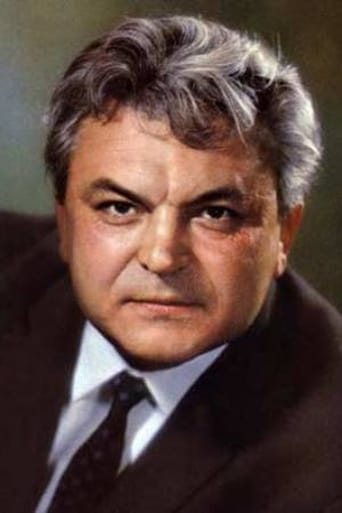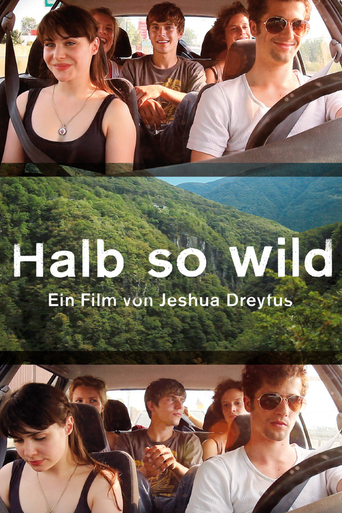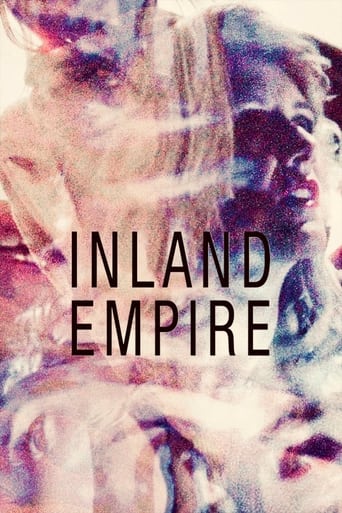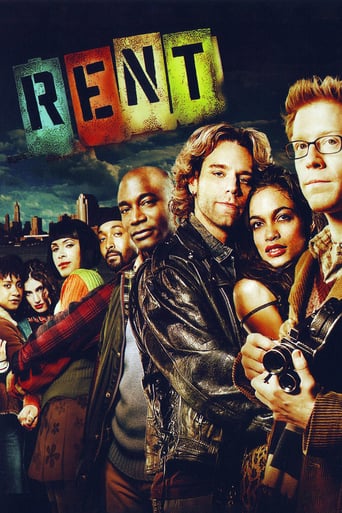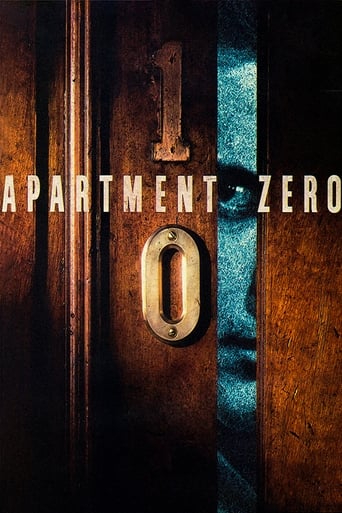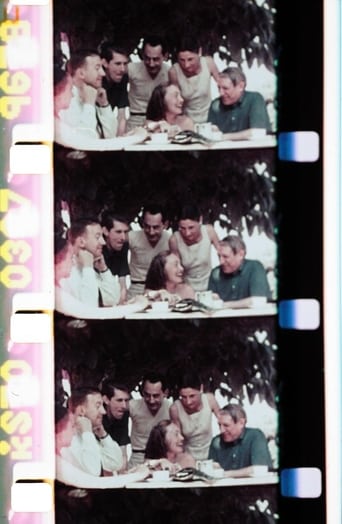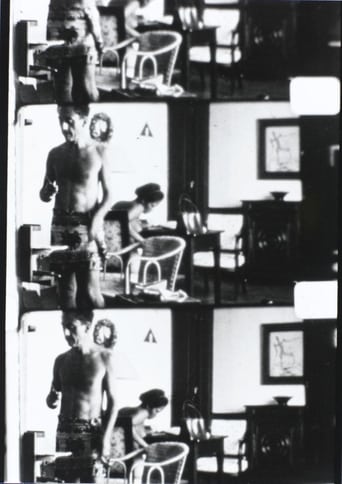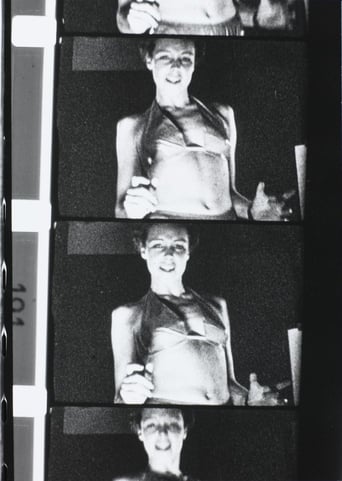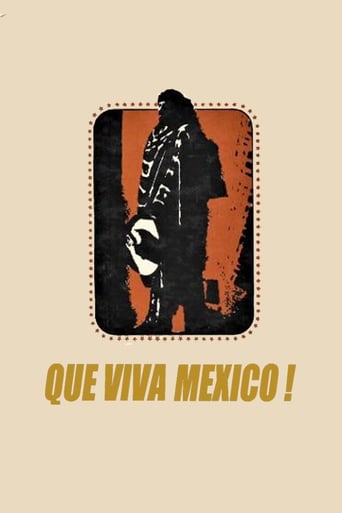

Que Viva Mexico! (1979)
Eisenstein shows us Mexico in this movie, its history and its culture. He believes, that Mexico can become a modern state.
Watch Trailer
Cast


Similar titles
Reviews
Viva La Riza! The movie portrays Mexican culture in a great way. It show the history of Mexico from pre-Conquest civilization to the Mexican revolutions of the early 20th century. Despite that, the movie is still a flawed masterpiece from Russian avant-garde director Sergei Eisenstein. The production for the film was beset by difficulties that Sergei couldn't stop. First off, shooting for the film was delay, by the Mexican government, due to the fact, that Sergei Eisenstein's films are known for their political subversion. Fearing that, Eisenstein would spark, yet another national revolt, toward communism. The Mexican government would only allow the Soviet filmmakers entry into their country, if they agree to their condition about how the film was going to be portray. In their agreement, the film was not to show or imply anything that could be construed as insulting to or critical of post-Revolution Mexico. This condition meant, that Sergei's original intended to document the mythic struggle of a Mexican people in a perpetual state of unrest, would not happen. If Sergei didn't comply with the agreement, the filmed material would be subject to censorship and taken by the Mexican government. In the end, the movie was never molded into the film that he has intended. Maybe it's a good thing, because Communist Propaganda driven movie, would be a harder film to watch. Another problem that Sergei face, during production was the lack of money, funding the trip. Most of the film's American financiers back off when the filming for the film went a little over budget during shooting. Things got worse for Sergei, when lead financier, Upton Sinclair stop funding the film, due to their disagreement on how the film was going to be shot. Upton Sinclair wanted an artistic travelogue; while Eisenstein wanted a multi-part film, almost like an anthology with each part focused on a different subculture of the Mexican peoples. The movie was supposed to be divide into six parts: Prologue, Sandunga, Conquest, Fiesta, Magey, Soldadera and Epilogue. The film as a whole, would have parts, base on some primal element (stone, water, iron, fire, air), and have a overlooking story of romantic as the movie moves from themes of life and death, culminating in the mockery of death. The soundtrack in each case would feature a different Mexican folk song. Sadly, the movie didn't go that way. After various projects proposed by Charles Chaplin and Paramount Pictures fell through. The studio released him from his contract, leaving the production with little to no budget. It didn't help that his own country, the Soviet Union was turning their back, from him, due to Eisenstein's foray onto the western culture. They saw it, as an act of betrayal. When Eisenstein try to defect to the United States, by entering American border, during production. They decline him, when they found out, that his re-entry visa had expired. With no studio to edit his film, he was forced to return to the Soviet Union, after production, but due to his vision of communism. It brought him into conflict with officials in the ruling regime of Joseph Stalin until Eisenstein's death in 1948. Due to these reasons, the film was shelf for years. In 1979, the Soviet Union government retrieved the fragments of the film, and forced assistant director, Grigori Aleksandrov to edit this movie, based on the notes and storyboard of Eisenstein. The film was divided in three parts. The first one introduction gives a historical panel of Mexico and the Mexican people. This part, was well-shot and felt like a documentary. This part in the film was very much influenced by the works of with Frida Kahlo and Diego Rivera as it moves as if the frames were frescoes. The second part doesn't feel like a documentary at all. The second part had a fiction story about a bride kidnap by a powerful farmer on her wedding day, and her fiancé, his brother and two friends trying to rescue her. It was a bit odd to watch. This part is example of avant-garde aesthetics, an exercise in form rather than documentary realism; but indirectly, recreate the Mexican culture atmosphere. Unfortunately, the conclusion of the story was never finish, as Eisenstein had no more money to film, the rest. The last part, called Epilog, tells the celebration of Day of the Dead AKA dia de finados, with the population wearing masks of skull and celebrating death. This part of the film was supposed to be the incarnation of Surrealism, but somehow the message was lost in this version of the film. Overall: It kinda hurts, that the movie was release, a little late. In many ways, the movie looks and feels somewhat dated. While, the film still displays all of Eisenstein's revolutionary techniques. It looks pretty cheap, looking. It didn't do a good job, proving his narrative style nor does it show Mexican in a realistic light. It look good, but just think, if the film didn't have all those roadblocks. It could have been great. In the end, this awe-inspiring film stands as a testament to what might have been.
This is the greatest documentary fiction I've ever seen, despite this movie was incomplete the beauty of the images is great, with a great culture you can make magic with the camera. The Mexican people have a wonderful big culture and personally I didn't know a little things about my own country.About the part of fiction is great that this reality is happening know and the sense of revolution is present, i think that only a Russian could understand the sense of the work people.The drama and the courage of the indians in the defense of the honor and the repression is a symbol of the revolution that needs the country.
Que Viva Mexico is an interesting (reconstruction of a) film by Sergei Eisenstein, the director of so many masterpieces. In fact, of all that I have seen, this is the only non-masterpiece of the bunch. Even the reconstruction of Beshin Meadow I like more. Que Viva Mexico is a semi-documentary. Most of it is uninteresting and, unlike Eisenstein's other films and Tisse's other cinematography, poorly composed. The only parts of real interest come near the end, with the rebellion, something that Eisenstein was used to creating on screen. There is a great gunfight with a woman participating, a precursor to Alexander Nevsky's Vasilisa, and there is a great scene where some rebels are buried up to the shoulders underground and then trampled by horses (by far the best scene in the film). The Day of the Dead celebration is also very interesting. There is also a bullfight that will demonstrate just how cruel bullfighting is. I do have to complain about the reconstruction that I watched. This was supposed to be a silent film, I believe. The narration I did not mind, for Eisenstein would have had to find a way to communicate what the narrator did anyway. And the music is good, often great. But I object to the insertion of diagetic sound effects, like guns shooting and horses galloping. This is ridiculous. Obviously the only people who are ever going to see this film are Eisenstein enthusiasts, so to try to sell it to the public as a sound movie is ridiculous. Why?
Although its coscenarist and director, Sergei M. Eisenstein did not live to complete "Que Viva Mexico?," the Russian who reconstructed this 1979 version for Mosfilm, Grigori Alexandrov, co-authored the film and worked closely with Eisenstein in 1931 and 1932 in the filming of the footage ultimately fashioned into several pictures, including butchered versions released by Sol Lesser and even some Bell and Howell documentaries! At some point, the man who initially commissioned the movie, Upton Sinclair, donated all or almost all of Eisenstein's footage to the Museum of Modern Art, which made it available as it was shot (take by take by take) in a "study" film. This is the first time, to my knowledge, that an edited version has appeared in video, and for that, Eisenstein fans and lovers of cinema should be jubilant! Even if Alexandrov had cut the footage completely out of order and in a form that would make Sergei Mikhailovich roll over in his grave, we can appreciate the dynamic power of the images, so ingeniously composed and photographed by Eisenstein with his longtime cameraman, Eduard Tisse. Of course, Eisenstein's remarkable scenario could never be realized EXACTLY as he wrote it, but Alexandrov did an admirable job all the same. In whatever form we see it, Eisenstein's footage reminds us that this aborted masterpiece, had he been able to complete the movie, would have been just that -- one of the greatest motion pictures of all time. It is a tragedy for film lovers that Eisenstein could not obtain the negative from the Sinclair cabal (which included the American author's Pasadena, California Standard Oil cronies!) at the time. But this 1979 version is better than nothing, and a lot better than many so-called movies churned out by Hollywood today. The film should be studied by every student of cinema, and especially photographers and editors. In truth, Eisenstein probably was planning as many as six different films, but Sinclair sent his alcoholic brother-in-law to ride herd on the Russians, to the result that the "plug was pulled" on the production short of its completion by Eisenstein. Frankly, had the latter managed to complete the movie and edit it himself, I am convinced film buffs would put it right up there with "Citizen Kane" and "Casablanca" (i.e. among the greatest masterpieces of cinema). I recommend the film highly, if only as a reminder of what might have been!


